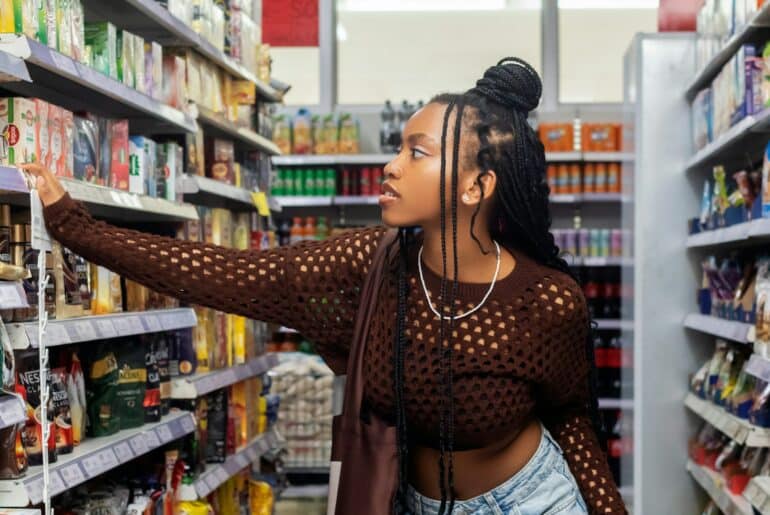There were roughly 302,205,000 social media users in the United States in 2022: that’s almost the entire population of the country. This makes a social presence – whether through social media or an online brand community – crucial to any marketing campaign or strategy.
Despite a staggering number of people actively using social media daily, a statistic alone won’t give you the information you need to engage with your target audience on a personal level. For that, you need to look deeper into the who, when, where, and why of social media statistics:
- Who is your audience?
- When are they engaging with content?
- Where are they choosing to spend their time online?
- Why are they engaging with your content or your competitors’ content?
Today, we’re going to explore some of these questions (primarily the where and why) from the perspective of two generalized groups: men and women.
For marketers trying to understand their audience better, it’s important to note that statistics (and especially binary statistics) don’t always tell the whole story.
With that in mind, it’s better for many brands to let your prospects tell you about themselves directly through an online brand community. However, statistics and insight into social behavior on third-party platforms can give you a better idea of how to get that conversation started within a brand-owned space.
Where Men and Women Like To Spend Their Time Online
For the most part, men and women share the same social media platforms. No one platform that we cover here is used exclusively by men or entirely by women. That said, the percentage of either can vary wildly by platform – and even by age.
To demonstrate this, let’s look at five of the most popular social media platforms: TikTok, YouTube, Instagram, Pinterest, and Facebook.
TikTok
Just last year, TikTok took the number one spot as the most downloaded app worldwide. The app has over one billion users globally, with the user base skewed slightly toward a female audience. In the United States, 61% of TikTok users are female.
TikTok is often regarded as the social media app for Gen Z, and the data reflects this sentiment: the app has over 420 million users aged 18–24.
Why TikTok?
So, what is it that makes TikTok an attractive channel for marketers looking to connect with their audience?
- TikTok is the most engaging social media app by a large margin. The average daily usage time is 95 minutes – over 20 minutes more than the second-place app, YouTube.
- TikTok’s Creator Marketplace gives brands the opportunity to partner with TikTok creators to boost brand awareness. In fact, as many as 35% of users discover new brands through creator content.
- TikTok can also be used as a customer building tool: 73% of users say they felt a deeper connection to brands they interacted with on the app, while 67% mention that content on the app persuaded them to make purchases – even when they weren’t looking to buy.
While more people are turning to TikTok as a source of news and information, brands looking to take advantage of the platform should create funny or entertaining content – that’s what resonates best with the current demographic.
- The Creator Marketplace is also a tremendous opportunity for brands to build more brand awareness.
- TikTok Creators know the current trends and constantly research new ones to keep their content relevant.
- By partnering with creators, you can showcase your brand in front of thousands, if not millions of users from experts with an active audience.
YouTube
Despite being over 15 years old, YouTube remains one of the most popular social media platforms with over a billion unique visitors every month.
- For YouTube visitors in the US, around 54% identify as male, while 46% identify as female.
- On average, people spend around 19 minutes per day on YouTube.
Despite these basic stats, YouTube usage varies dramatically depending on the user’s unique behavior. Some visitors may follow links from other sites to watch a quick video, while others will dive down a rabbit hole and spend hours consuming content.
Why YouTube?
As one of the most popular platforms for video in the world, marketers not taking advantage of YouTube are certainly missing out on prime real estate for reaching a global audience.
Let’s not forget about ads, either. With so many users accessing the platform daily, YouTube ads have the potential to be seen by over 2.5 billion people worldwide.
- Although TikTok may have taken over some of the market share as a video platform, YouTube isn’t going down without a fight.
- In fact, the new competition is forcing YouTube to think of creative ways to stay relevant into the future – including some newer changes for creators.
- Although YouTube users enjoy comedy and other forms of entertainment, there’s one type of content that helps YouTube reign supreme: Educational content.
- YouTube is one of the primary destinations for people who want to know how to do something or learn more about something.
With “how-to” and educational content performing well on the platform, brands can transform other forms of content, such as blog posts, into digestible videos to inform and inspire customers at all stages of the buyer’s journey.
YouTube Shorts
- YouTube launched “YouTube Shorts” back in September 2020 to capitalize on the vacuum left by the banning of TikTok in India.
- Since then, the platform has moved to the US and grown exponentially. It works similarly to TikTok and competes directly with the platform.
- For brands who don’t want to venture into TikTok or want another platform option for short-but-sweet content, YouTube Shorts is a great alternative.
Globally, men outnumber women on Instagram – but just barely. In fact, the numbers are so close (50.7% to 49.3%, respectively) that Instagram is a great social media platform to appeal to both groups in terms of general stats.
What’s interesting is that those numbers start to shift and evolve when you break down Instagram fans by age and location:
- For Instagram users aged 35 or more, women are more present than men on the platform.
- Looking at data from September of this year of users in the United States, 55.6% of people on the platform are women.
Why Instagram?
Instagram’s largest user base hails from three countries:
- India
- United States
- Brazil
Why does it matter? Visitors to Instagram report using the platform for different reasons depending on their country of origin.
- In India, 98% of people on Instagram use the platform to connect to their interests – which are primarily in the tech sector.
- In the US, visitors to Instagram (regardless of gender) are using the platform for entertainment, shopping, and a sense of community connection.
- Over 89% of people on Instagram report following at least one brand with a presence on the platform.
- Of those surveyed by the platform, Instagram was ranked one of the top places people went to build better relationships with brands they already love.
In a HubSpot survey from early 2022, 301 Instagram users from the US were asked which traits they identified with top brands. While the sample size was small compared to Instagram’s total reach, their responses highlight why men and women visit the platform:
- Top brands publish relevant, valuable content that resonates with the daily lives or interests of their followers.
- The best brand content is humorous, attention-grabbing, and engaging.
- Top brands reward their followers for engaging with them by offering exclusive promotions or discounts.
While these are insights collected from a social media platform, many of them are just as applicable to a brand-owned community.
Over 75% of the Pinterest member base is female. This presents a much larger gap between men and women than Instagram.
What might come as a surprise is that one of the top age groups using Pinterest in 2021 was age 50–64 (38%), closely followed by age 30–49 (34%).
The average age of a Pinterest user is 40, so you may find that interactions and engagement on this platform play out very differently from social sites like Instagram and TikTok.
Why Pinterest?
Like Instagram, people are using Pinterest to connect with brands – but not the same way: 97% of searches are unbranded. For startups and challenger brands without big-name clout, this is a game changer.
- Essentially, Pinners are engaging with Pinterest to discover new ideas and inspiration.
- Pinterest users are open to building new relationships with brands they don’t know – especially if the brand’s product or service reaches them on a personal level.
- From there, Pinners are super shoppers: they’re willing to spend more compared to other platforms on brands, concepts, ideas, and products that catch their attention, spark their creativity, or resonate with their ideals.
Rather than looking for familiarity and validation like they might on Instagram, Pinners are looking for their next big idea – and they have the income to execute on it once they find it. In 2021, over 60% of Pinterest users had an annual household income above $50,000.
For brands trying to translate this information into building an owned online community, the key takeaway here is to provide value to your fans and prospects.
- Pinners engage with brands on Pinterest because of the perceived emotional, mental, or physical value they get from the brand’s product or ideas.
- You don’t need to rely on being a well-known brand to reach your audience if you provide a product or service that people connect with on some level.
Of all the social platforms on this list, Facebook is the established heavyweight champ – and the power of this platform only grew after it acquired Instagram in 2012 and WhatsApp in 2014.
In Q3 2022, Meta reported almost 3 billion active users across Facebook, Instagram, WhatsApp, and Messenger – making it an entity even bigger than YouTube. As of January 2022, men make up the majority of Facebook’s audience – especially between the ages of 18–34.
This represents an audience that is more similar in makeup to Instagram than Pinterest, which is unsurprising considering the shared connection to parent company Meta. However, what is unique between Instagram and Facebook are the reasons why people visit the platform.
Why Facebook?
Unlike Instagram, visitors to this social site are primarily using it to maintain connections with friends and family rather than engage with brands. In 2019, this represented 88% of the reasons why respondents were using Facebook. In contrast, only 17% of users reported using Facebook to engage with brands.
Beyond family, users are turning to Facebook for entertainment – if brands want to stand out here, they’ll need to provide content that fosters a community connection or is engaging, humorous, memorable, or emotionally driven.
- Once your brand connects with a dedicated audience, your content and products are more likely to be shared further with friends and family.
- This makes Facebook unique from Instagram where users are actively looking for and engaging with brands they already know to forge deeper connections.
- It’s also distinct from Pinterest, where people discover new brands while actively digging for ideas and planning projects.
The key takeaway from why people use Facebook is that brands need to focus on a sense of family and community to find footing on this platform. If you aren’t an established brand, the climb could be far more challenging than a brand-owned asset – even with the massive audience.
Regardless of Platform, Grow Your Community
Now that you know more about why your prospects visit and engage with brands on social media, it’s time to put those ideas into action by building a better brand community. This will help you appeal to your current audience while connecting with and engaging new fans.
To help you get started, we put ten of our favorite community-building tools and ideas in one place! Check out our article 10 Community Building Ideas You Need to Try to learn more.
Interested in more?
Some statistics and links have been updated since this blog was originally posted in 2014 to reflect new information currently available in 2023.



